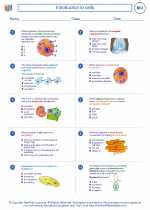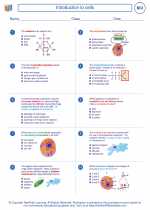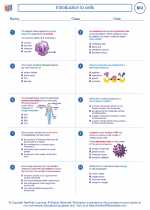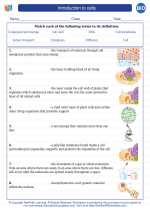Centrioles
Centrioles are small, cylindrical organelles found in animal cells. They are typically found in pairs and are located near the nucleus, within a region called the centrosome. Centrioles play a crucial role in organizing the microtubules that make up the cell's cytoskeleton. The centrioles are also involved in the process of cell division, where they play a key role in organizing the mitotic spindle, which is responsible for separating the chromosomes during cell division.
Structure of Centrioles:
Centrioles are composed of nine sets of microtubule triplets, arranged in a cylindrical structure. Each triplet consists of three microtubules arranged in a circular pattern. The two centrioles in a pair are oriented at right angles to each other, and this arrangement is important for their function in organizing microtubules during cell division.
Function of Centrioles:
Centrioles have two main functions in the cell:
- Organization of the Cytoskeleton: Centrioles play a key role in organizing the microtubules that form the cell's cytoskeleton. The cytoskeleton provides structural support to the cell and is involved in various cellular processes such as cell shape maintenance, intracellular transport, and cell motility.
- Role in Cell Division: During cell division, centrioles are involved in the formation of the mitotic spindle, which is essential for the separation of chromosomes. The centrioles help in organizing and anchoring the microtubules that make up the spindle, ensuring that the chromosomes are segregated accurately between the two daughter cells.
Study Guide:
If you are studying centrioles, here are some key points to focus on:
- Structure of centrioles: Understand the composition and arrangement of microtubule triplets in centrioles.
- Function of centrioles: Learn about the role of centrioles in organizing the cytoskeleton and their involvement in cell division.
- Centrosome: Understand the relationship between centrioles and the centrosome, the region in the cell where centrioles are located.
- Cell division: Study how centrioles contribute to the process of cell division, specifically in the formation of the mitotic spindle.
- Centrioles in different organisms: Explore how centrioles may vary in structure and function across different animal cells.
By understanding the structure and function of centrioles, you can appreciate their importance in maintaining the structural integrity of the cell and ensuring accurate chromosome segregation during cell division.
.◂Biology Worksheets and Study Guides High School. Introduction to cells

 Worksheet/Answer key
Worksheet/Answer key
 Worksheet/Answer key
Worksheet/Answer key
 Vocabulary/Answer key
Vocabulary/Answer key
 Vocabulary/Answer key
Vocabulary/Answer key
 Vocabulary/Answer key
Vocabulary/Answer key
 Vocabulary/Answer key
Vocabulary/Answer key
